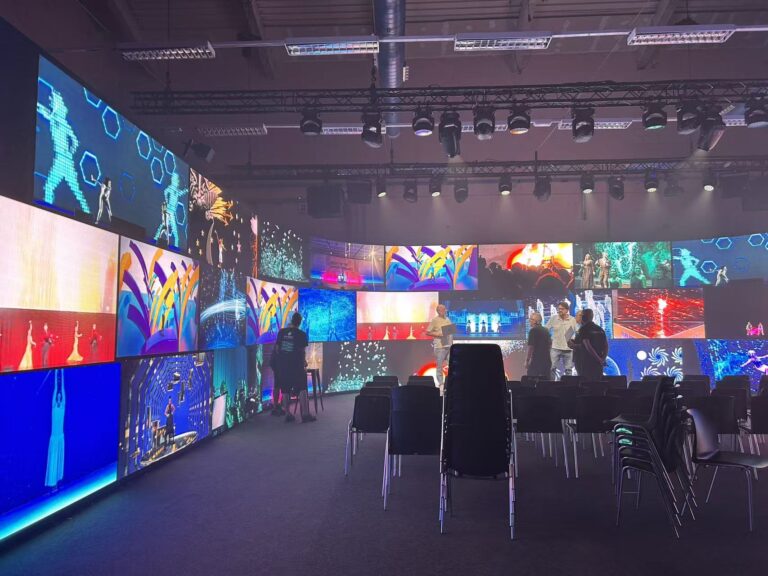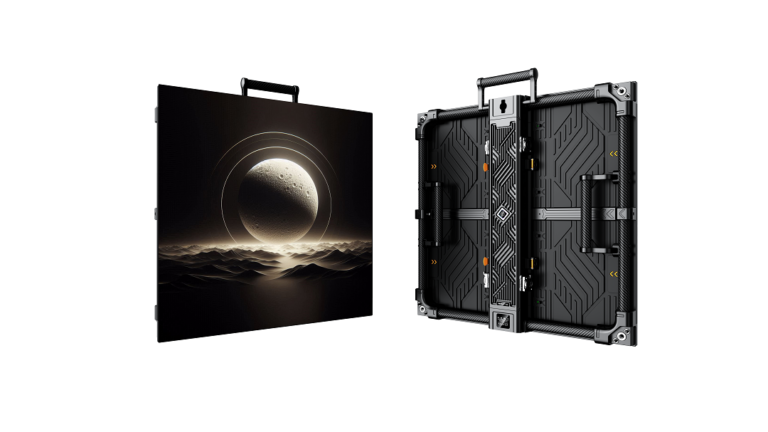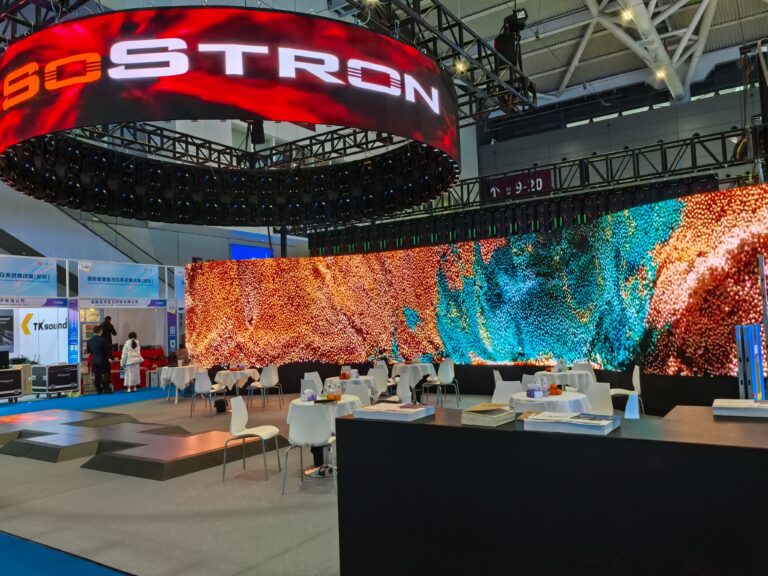Directory
Semi-outdoor LED display
Full outdoor LED display
The difference between semi-outdoor and all-outdoor LED displays
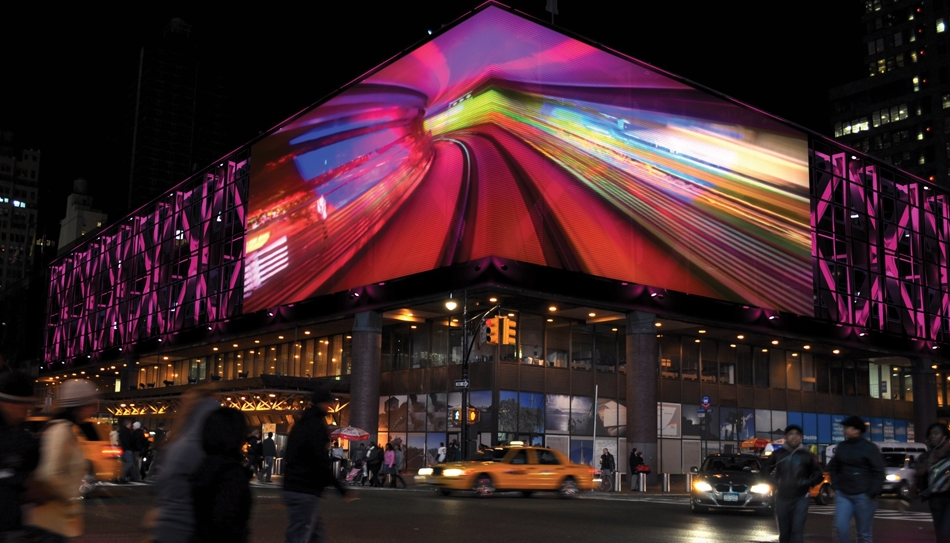
Semi-outdoor LED display
Semi-outdoor LED display is a type of LED display for outdoor use. Its housing structure and sealing is slightly weaker than full outdoor display, but it has higher brightness and wider viewing Angle. It is usually used in situations that require higher brightness and a wider viewing Angle, such as billboards, outdoor TV walls, stadiums, stages, and so on.
Semi-outdoor LED displays are typically between 5,000 and 8,000 nits brighter than indoor leds, making them clear in direct sunlight outside. In addition, the semi-outdoor LED display has a wider viewing Angle, reaching 160 degrees horizontally and vertically, which ensures clarity and color restoration even if the viewer is watching from different angles.
Semi-outdoor LED displays are usually composed of spliced modules whose size and pixel density can be adjusted according to demand. The larger the module size, the lower the pixel density, the corresponding brightness and viewing distance will be affected. Therefore, modules of different sizes and pixel densities can be selected to form semi-outdoor LED displays according to different use situations and requirements.
In the case of semi-outdoor LED display, aluminum alloy material or die-cast aluminum alloy material is usually used, and the surface of the shell is covered with protective glass or anti-ultraviolet film, in order to increase the wind resistance, water resistance, anti-ultraviolet and other performance of the display screen. At the same time, the modules must be sealed to prevent rain and dust from entering the display screen, which may affect the display effect and service life of the device.
It should be noted that the semi-outdoor LED display is not completely waterproof, in bad weather and environment, such as strong wind, rain, dust, etc., may need additional protective measures, such as installing protective cover or stopping the display. Therefore, when using the semi-outdoor LED display, reasonable protection and maintenance should be carried out according to the actual situation to ensure the long-term stable operation of the device.
In short, the semi-outdoor LED display has the characteristics of high brightness, wide Angle of view, flexibility and so on. It is widely used in all kinds of outdoor occasions and has become an important part of outdoor media advertising and large-scale activities.

Full outdoor LED display
The all-outdoor LED display is a highly protective LED display for outdoor use, with extremely high brightness and wind, water and UV resistance, which can operate stably in extreme climates and environments. It is usually used in situations that require higher brightness and a wider view, such as billboards, large events, sports venues, public transportation, etc.
Fully outdoor LED displays are typically between 8,000 and 12,000 nits in brightness, much higher than indoor and semi-outdoor LED displays, allowing them to display clearly in extreme direct sunlight outside. In addition, the all-outdoor LED display has a wider viewing Angle, reaching 160 degrees horizontally and vertically, which ensures clarity and color restoration even if the viewer is viewing from different angles.
Outdoor LED display shell structure and tightness are very strong, usually made of stainless steel or aluminum alloy material, shell surface covered with protective glass or anti-ultraviolet film, to increase the display wind resistance, water resistance, anti-ultraviolet performance. At the same time, the modules must be sealed to prevent rain and dust from entering the display screen, which may affect the display effect and service life of the device.
Pixel density and size of all-outdoor LED displays are also important. High density pixel layout is usually used to ensure the sharpness and detail restoration of the display effect. The larger the module size, the lower the pixel density, the corresponding brightness and viewing distance will be affected. Therefore, modules of different sizes and pixel densities can be selected to form an all-outdoor LED display according to different use situations and requirements.
It should be noted that the fully outdoor LED display requires professional installation and maintenance to ensure the stable operation and service life of the equipment. When using the outdoor LED display, pay attention to the environmental and climatic conditions, and timely clean and maintain the shell and internal components of the display to extend the service life of the device and ensure the display effect.
In short, the outdoor LED display has extremely high brightness, wind resistance, water resistance, UV resistance and other performance, widely used in a variety of extreme climate and environment outdoor occasions, become an important part of outdoor media advertising and large-scale activities. 8 free guides to buying outdoor LED screens.
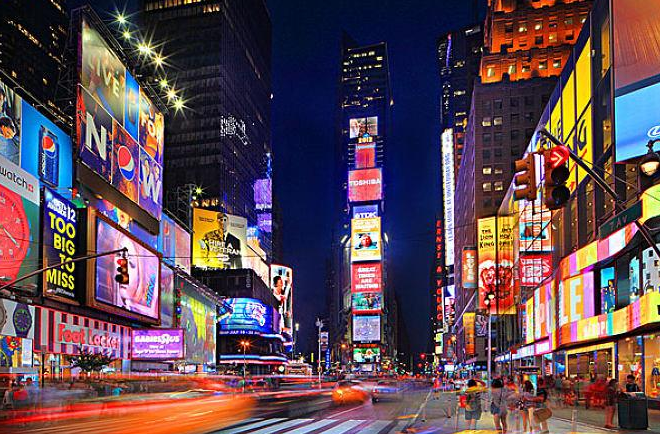
The difference between full outdoor LED display and semi-outdoor LED display
Fully outdoor LED displays and semi-outdoor LED displays are two common outdoor LED displays, and there are some differences between them.
First, there are differences in wind resistance, water resistance and UV resistance between all-outdoor LED displays and semi-outdoor LED displays. All-outdoor LED displays typically use stronger, more protective materials and structures that can withstand stronger wind and water currents and protect the screen from UV damage. Semi-outdoor LED display relatively weak protection performance, only suitable for some outdoor environment with small wind and water flow.
Secondly, there is also a difference between the brightness of the all-outdoor LED display and the semi-outdoor LED display. The brightness of the all-outdoor LED display is generally between 800012000 nits, higher than that of the semi-outdoor LED display. This allows the all-outdoor LED display to remain clear even in direct sunlight. The brightness of the semi-outdoor LED display is generally between 30006000 nits, which is suitable for some outdoor places with low light.
Furthermore, there are also differences between outdoor LED display and semi-outdoor LED display in applicable places and service life. All-outdoor LED screens are suitable for harsher outdoor environments, such as large sports venues, billboards, public transportation, etc., and their service life is usually longer, which can reach more than 10 years. The semi-outdoor LED display is usually used in outdoor squares, shopping malls and other places, the service life is relatively short, generally in about 5 years.
Finally, there is a difference in price between all-outdoor LED displays and semi-outdoor LED displays. The price of an all-outdoor LED display is relatively high due to its higher requirements for wind, water and UV resistance, as well as more expensive materials and manufacturing processes. Semi-outdoor LED displays are relatively inexpensive.
In general, the difference between outdoor LED display and semi-outdoor LED display mainly lies in wind resistance, water resistance, UV resistance and other performance, brightness, suitable place and service life. The selection of the appropriate LED display should be carried out according to the specific needs, to ensure that the requirements of the use of the occasion and achieve the desired effect.


